Financial Accounting > EXAM > WGU C170 - Data Management - Applications (All)
WGU C170 - Data Management - Applications
Document Content and Description Below
Domain In data modeling, the construct used to organize and describe an attribute's set of possible values. Primary key (PK) An identifier composed of one or more attributes that uniquely identifie... s a row. Also, a candidate key selected as a unique entity identifier. A minimal superkey. Key One or more attributes that determine other attributes. Determination The role of a key. In the context of a database table, the statement "A determines B" indicates that knowing the value of attribute A means that the value of attribute B can be looked up. Determinant Any attribute in a specific row whose value directly determines other values in that row. Dependent An attribute whose value is determined by another attribute. Full functional dependence A condition in which an attribute is functionally dependent on a composite key but not on any subset of the key. Composite key A multiple-attribute key. Key attributes The attributes that form a primary key Superkey An attribute or attributes that uniquely identify each entity in a table. Candidate key A minimal superkey; that is, a key that does not contain a subset of attributes that is itself a superkey. Entity integrity The property of a relational table that guarantees each entity has a unique value in a primary key and that the key has no null values. Null The absence of an attribute value. Foreign key An attribute or attributes in one table whose values must match the primary key in another table or whose values must be null. Referential integrity A condition by which a dependent table's foreign key must have either a null entry or a matching entry in the related table. Secondary key A key used strictly for data retrieval purposes. For example, the combination of last name, first name, middle initial, and telephone number will probably match the appropriate table row. Also called an alternate key. Relational algebra A set of mathematical principles that form the basis for manipulating relational table contents; the eight main functions are SELECT, PROJECT, JOIN, INTERSECT, UNION, DIFFERENCE, PRODUCT, and DIVIDE. Relvar Short for relation variable, a variable that holds a relation. It is a container (variable) for holding relation data, not the relation itself. Closure A property of relational operators that permits the use of relational algebra operators on existing tables (relations) to produce new relations. SELECT operator An operator used to select a subset of rows. Also known as RESTRICT. σ cus_code = 10010 PROJECT operator An operator used to select a subset of columns. In other words, it yields a vertical subset of a table. This operation retrieves all rows and some attributes of a table without using a WHERE clause to limit which rows of the table are included. π cus_fname, cus_lname UNION operator This set operator combines the result set of two or more SELECT statements, dropping the duplicate rows. supplier ∪ vendor Union-compatible Two or more tables that have the same number of columns and the corresponding columns have compatible domains. INTERSECT operator This set operator combines the output of two SELECT queries and returns only the rows that appear in both. supplier ∩ vendor DIFFERENCE An operator used to yield all rows from one table that are not found in another union-compatible table. supplier – vendor PRODUCT An operator used to yield all possible pairs of rows from two tables. customer × agent JOIN In relational algebra, a type of operator used to yield rows from two tables based on criteria. There are many types, such as natural, theta, equi, and outer. Natural join (JOIN) A relational operation that yields a new table composed of only the rows with common values in their common attribute(s). customer ⨝ agent Equijoin A join operator that links tables based on an equality condition that compares specified columns of the tables. Is a special type of theta join Theta join A join operator that links tables using an inequality comparison operator (<, >, <=, >=) in the join condition. INNER JOIN A join operation in which only rows that meet a given criterion are selected. The join criterion can be an equality condition (natural join or equijoin) or an inequality condition (theta join). This join is the most commonly used type of join. OUTER JOIN This join Returns a set of records that includes rows for which no corresponding match is found in the other table. Unmatched values in the related table are left null. Three types LEFT, RIGHT and FULL LEFT OUTER JOIN In a pair of tables to be joined, a join that yields all rows in the left table, including those that have no matching values in the other table. SELECT *FROM T1 ____________ T2 ON T1.C1=T2.C1 RIGHT OUTER JOIN In a pair of tables to be joined, a join that yields all of the rows in the right table, including the ones with no matching values in the other table. SELECT *FROM T1 ____________ T2 ON T1.C1=T2.C1 FULL OUTER JOIN Returns rows with matching values and includes all rows from both tables (T1 and T2) with unmatched values SELECT *FROM T1 ____________ T2 ON T1.C1=T2.C1 DIVIDE operator An operator that answers queries about one set of data being associated with all values of data in another set of data. It uses one 2-column table as the dividend and one single-column table as the divisor. JOIN operation This operation integrates data from two or more tables or combines them. It can be implemented in the FROM and WHERE clauses. Data dictionary A DBMS component that stores metadata. It contains the data definition as well as their characteristics and relationships. It may also include data that are external to the DBMS. Also known as an information resource dictionary System catalog A detailed system data dictionary that describes all objects in a database. Homonyms The use of the same name to label different attributes. Some relational software automatically check for these and either alerts the user to their existence or automatically makes the appropriate adjustments. Synonym The use of different names to identify the same object, such as an entity, an attribute, or a relationship; For example, car and auto refer to the same object The 1:M Relationship This relationship is the relational modeling ideal. One record in a table can be associated with one or more records in another table. For example, each customer can have many sales orders. The 1:1 Relationship This relationship should be rare in any relational database design. One entity can be related to only one other entity, and vice versa. The M:N Relationship This relationship cannot be implemented as such in the relational model however, it can be implemented by creating a new entity in 1:M relationships with the original entities. Composite entity An entity designed to transform an M:N relationship into two 1:M relationships. The entity's primary key comprises at least the primary keys of the [Show More]
Last updated: 1 year ago
Preview 1 out of 16 pages
Instant download
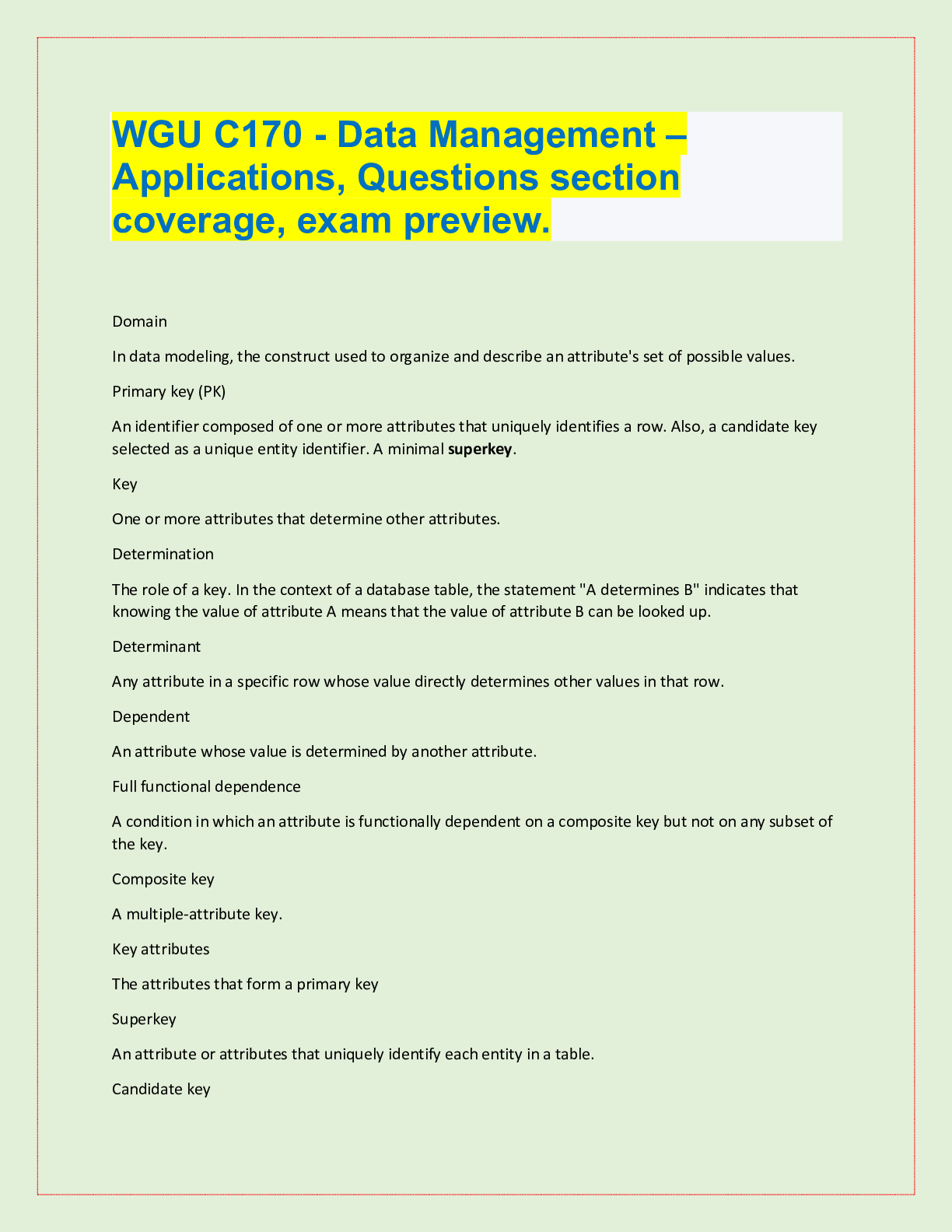
Buy this document to get the full access instantly
Instant Download Access after purchase
Add to cartInstant download
Reviews( 0 )
Document information
Connected school, study & course
About the document
Uploaded On
Feb 13, 2023
Number of pages
16
Written in
Additional information
This document has been written for:
Uploaded
Feb 13, 2023
Downloads
0
Views
75

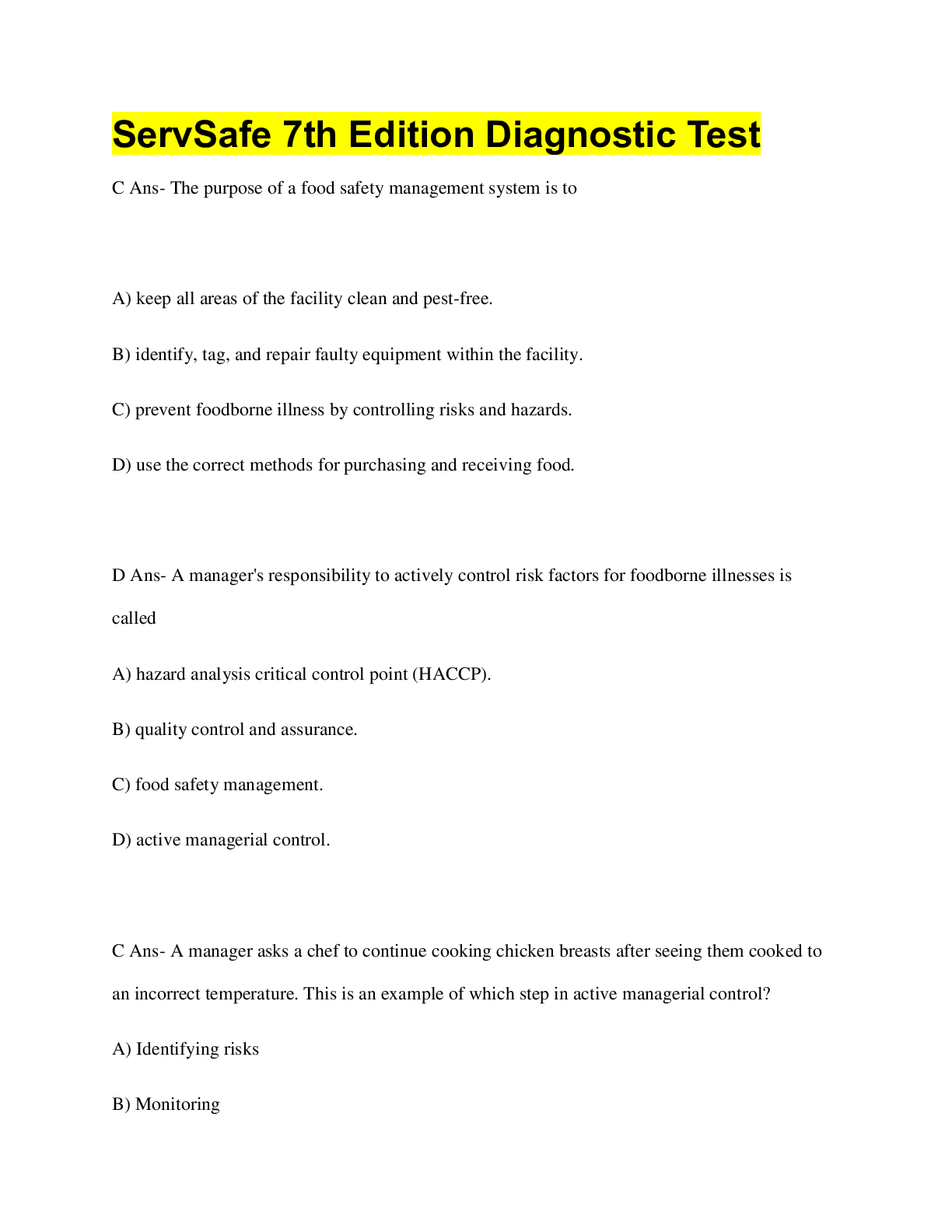
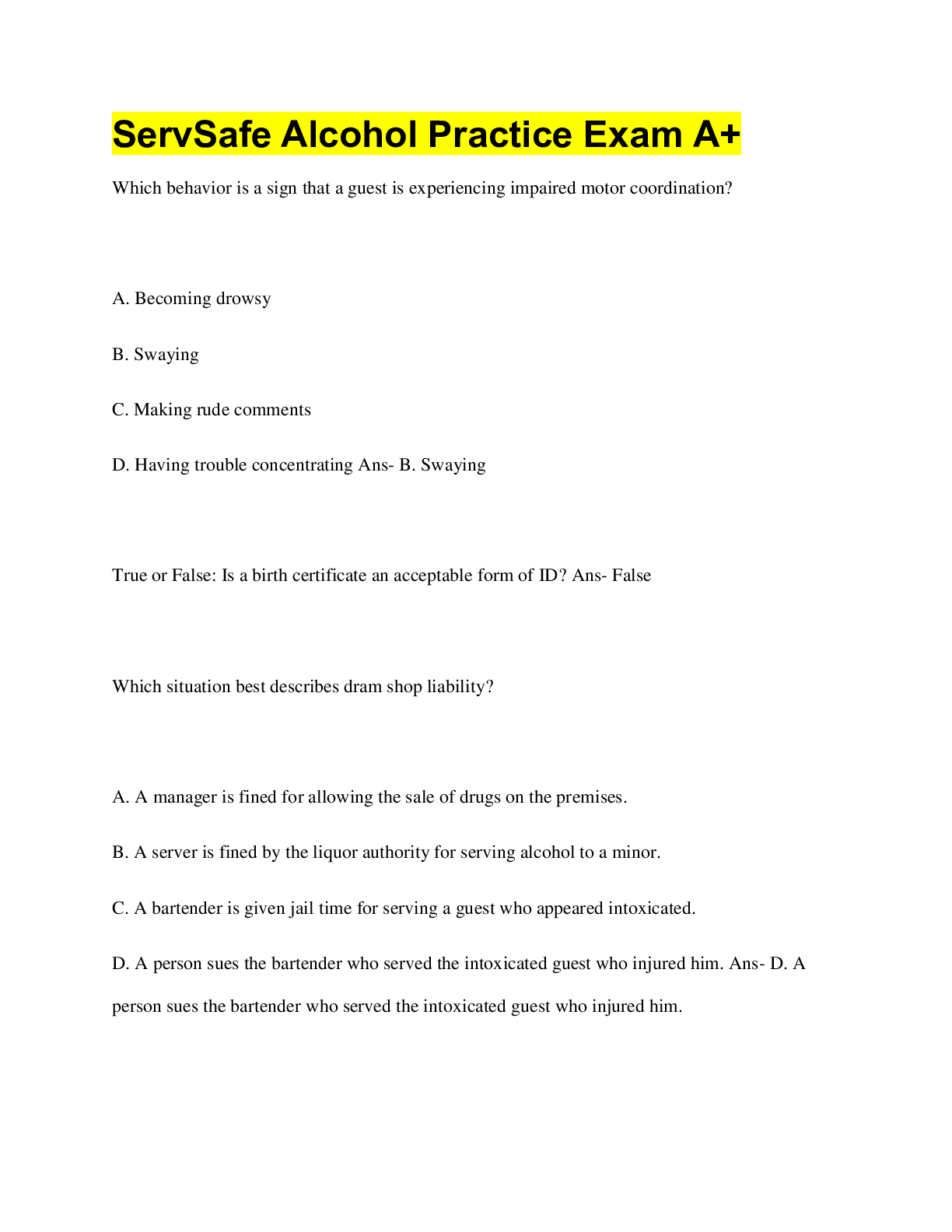
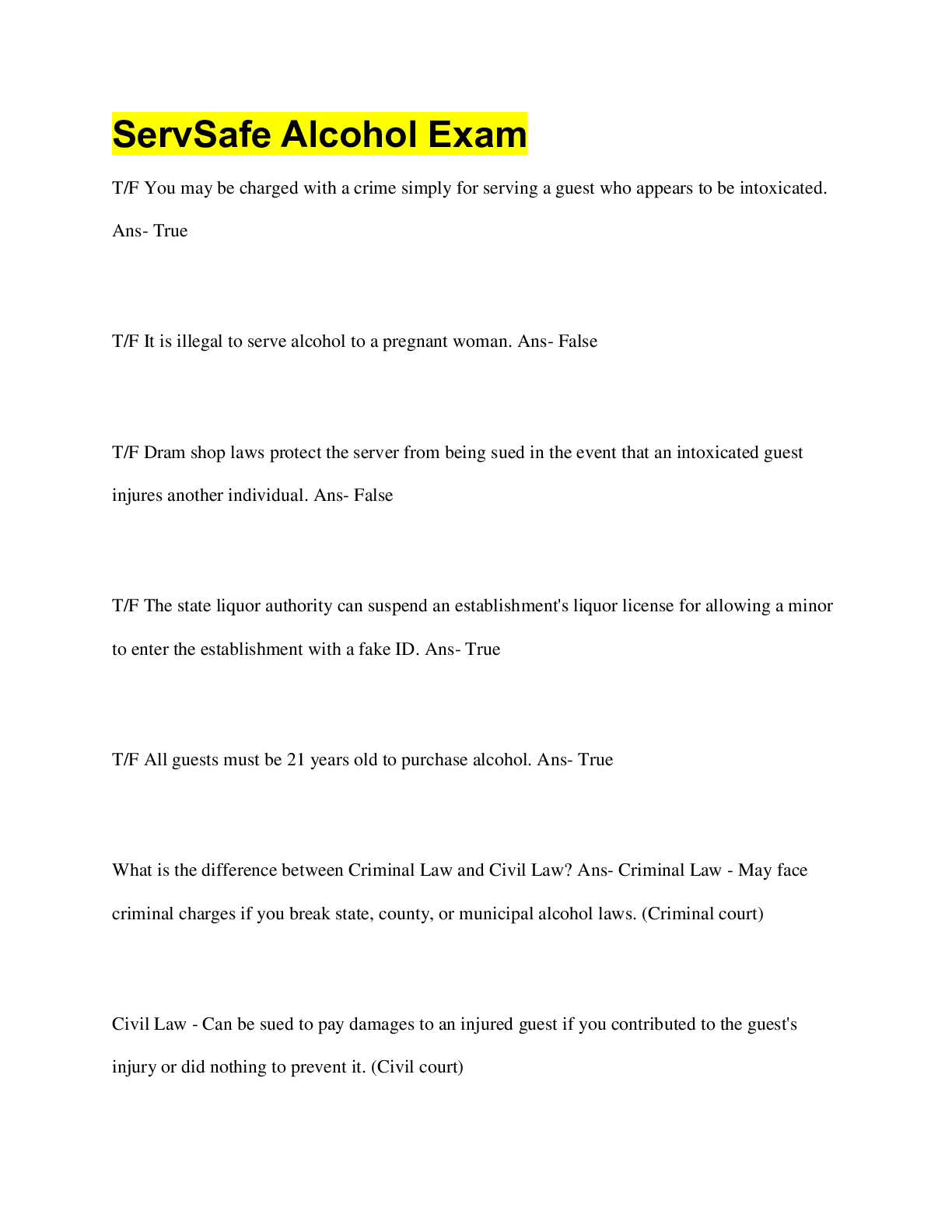
.png)

.png)


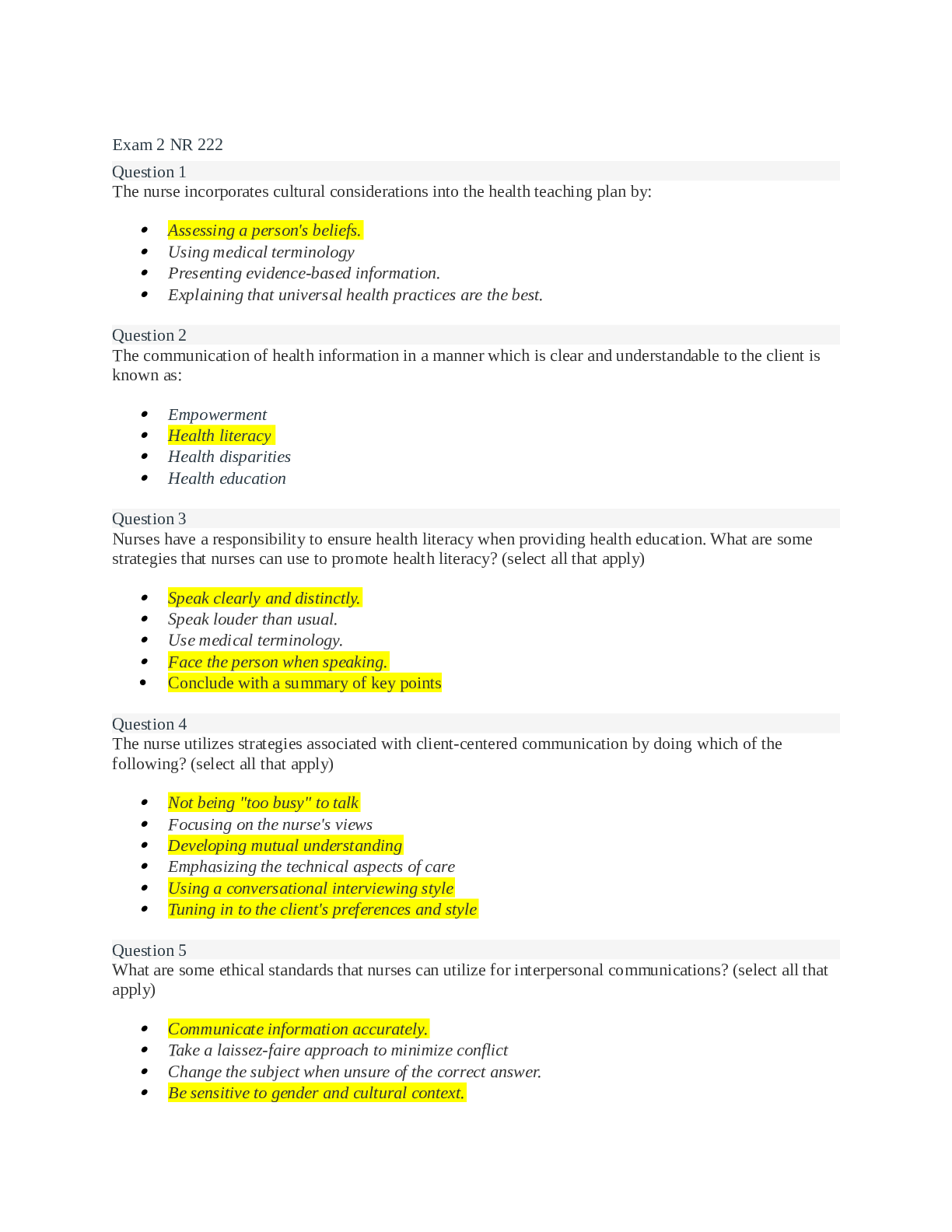



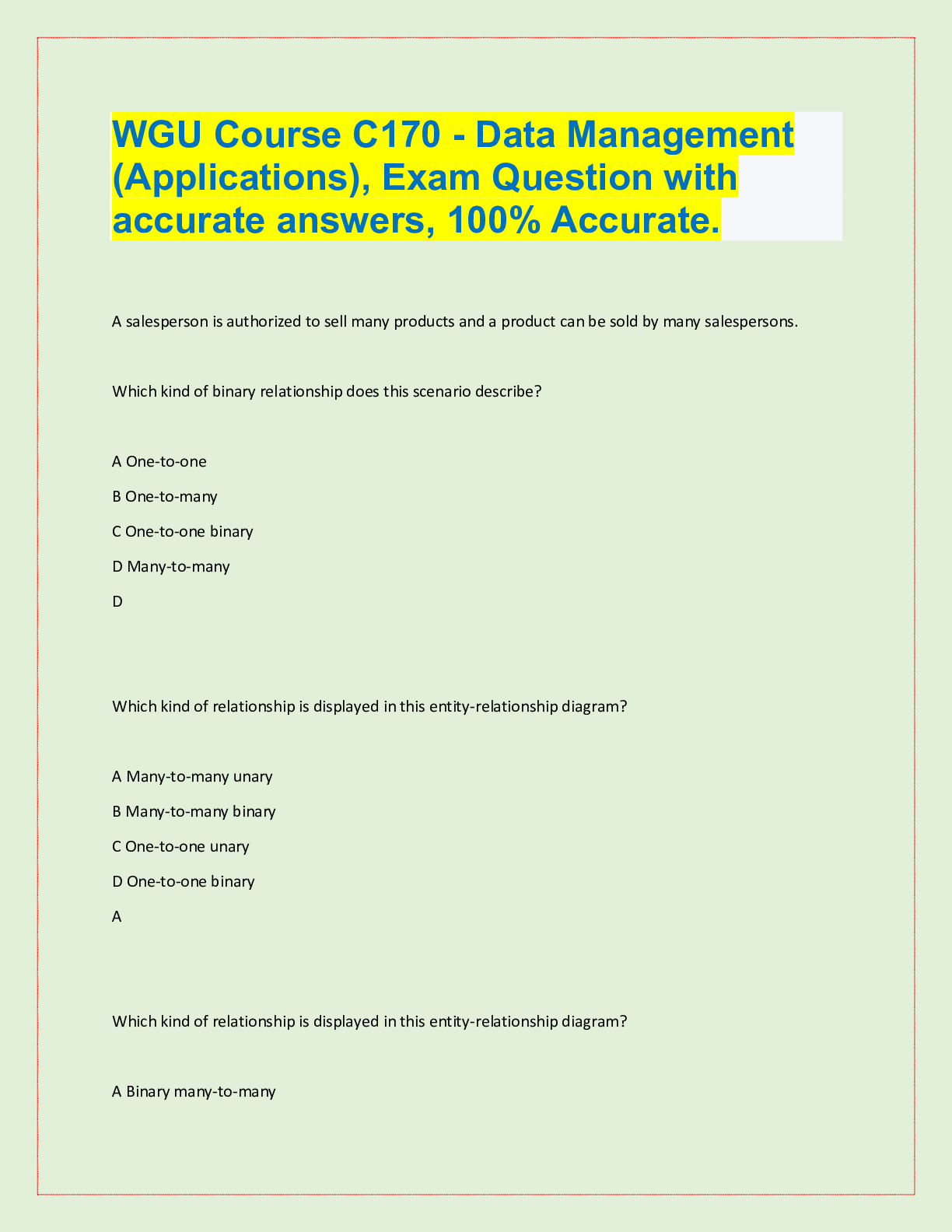
-with 100% verified answers 2022.png)
 Questions And Answers( Complete Solution).png)
.png)

